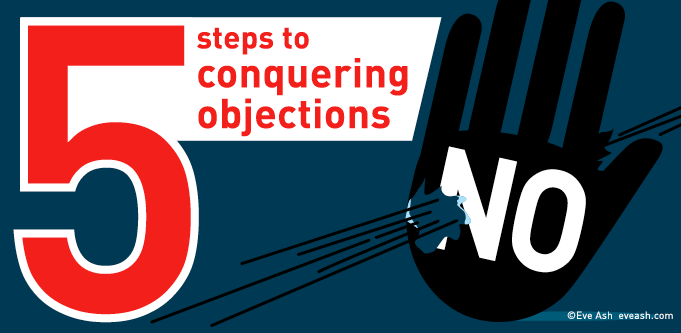“Does anyone have any objectives – I mean, objections?” the managing director asked the assembled throng. Aha, thought a copywriting friend, that’s it! Her boss’ Freudian slip illuminated the problem with her team. That’s why we always get objections, because people have different objectives. One person’s objective is almost inevitably cause for someone else’s objection. Our legal system is predicated on objections, as any planning lawyer will tell you.
Getting past the roadblocks
Semantics aside, it can be stressful trying to manoeuvre the roadblocks that colleagues throw your way. If you’re intent on outcomes, it will seem inconceivable how so few appear to “get” what you’re trying to do, even when it’s in their best interests. Some people will object out of spite and envy, others because their own brand of tunnel vision won’t accommodate different ways to achieve goals. In every workplace, there’s always a contrary position.
The late Australian prime minister Robert Menzies knew a lot about the power of no: “The truth of the matter is that to get an affirmative vote from the Australian people on a referendum proposal is one of the labours of Hercules.” Despite the recent “yes” vote on same sex marriage, Australians have approved a bare fifth of the referendums held since Federation in 1901. It’s not always that easy to change people’s minds!
Be prepared to go methodically when you have an objective and you will do best with any objection.
1. Listen fully and openly
Objectors can be abrasive and dismissive. They might pour scorn and cold water in equal amounts on your beautiful plan. Don’t be tempted to shut them down, even if you totally disagree with them and think they’re a bunch of refuseniks. Somewhere buried in the negativity is the key to taking your idea forward, or the real issue or concern of your buyer. The most scathing objections sometimes trigger ingenious solutions. So be all ears, be open to hear what the concerns are, especially if you want to progress.
2. Empathise with their concerns
This is where you practise “walking a mile in another person’s shoes”. If a person perceives a problem with what’s being floated, then it’s important to explore their concerns. Think about when you objected to an idea or someone’s proposal. What bothered you at that time? What unsettled everyone? Did you mistrust the person spruiking the proposal? Or was change being rammed through, with only lip service paid to consultation? No matter what’s said about disruption, for most people, it represents discomfort and disenfranchisement, and these fears are genuine. So care about that person’s fears and concerns, and show empathy.
3. Address all issues honestly
People value honesty, even when the news is not good. In dysfunctional workplaces good ideas evaporate when objectors negatively influence the team. We need to ensure the culture welcomes honest debate. Sometimes in politics unpalatable policies and initiatives simply have to go ahead. Key to at least having a worthwhile discussion is making sure all issues and concerns are openly addressed without being disingenuous. Pretending you know less about something than you actually do is not going to decrease objections, nor is sidetracking with a different issue.
4. Offer realistic options
Look to find what is possible given the limitations. Be creative but above all be realistic. Explain why this will work, present the option as practical, workable and fair. Sometimes the persuader attempts to swat away naysayers by promising something wonderful. Over-promising is a mistake. You can’t be sure exactly how a plan, policy or proposal will transpire, even if you think you’ve scoped every likely consequence. Curveballs happen. The old saying “under-promise and over-deliver” is better. Objectors will have more faith in you as a result.
5. Present a positive vision
How does your idea benefit each and every person on the team, your clients, and beyond? What are the macro and micro benefits of your proposal/service/product? Where will it save time, effort, money? Most of all, will it make your colleagues look good? (Never underestimate this one.) If you’ve really canvassed them, from top to bottom, and your vision is capable of application, then go for what you believe. In the face of a barrage of objections, staying true to your vision requires confidence and persistence. Sometimes the wholesale adoption of your plan will take time and effort.
Objectives and objections really are two sides of the same coin. When instigating something new, or planning sales presentation, find a ‘friendly devil’s advocate’ to prepare yourself for the inevitable objections.
NOW READ: 4 ways to impress others with your ideas
NOW WATCH: Listening Actively

